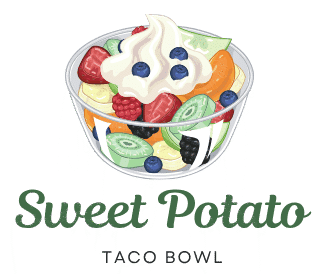Let’s be honest. Counting calories can feel like a full-time job, especially when you’re staring down a gorgeous taco bowl loaded with toppings. Like, how do you even begin to figure out the calories in that sweet potato, avocado, bean situation?
Enter: your secret weapon the humble food scale. Trust me, it sounds intense, but it’s actually pretty simple once you get the hang of it. And no, you don’t need to turn into a robot or start meal prepping like a bodybuilder.
Why a Food Scale Actually Helps
Eyeballing portions is cool… until you realize that your “tablespoon” of guac was actually more like three. Same with cheese, oil, even sweet potatoes. That stuff adds up fast.
Using a food scale gives you a clearer picture. It’s like turning on the lights in a room suddenly you can see what’s really going on. And no, it’s not about perfection. It’s about being close enough to make better choices.
Step-by-Step: Weigh Your Taco Bowl Like a Pro (Or at Least Not a Newbie)
- Turn on your food scale and set it to grams (or ounces, whatever you prefer).
- Place your bowl on the scale empty, then hit the “tare” button so it resets to zero.
- Add each ingredient one at a time, hitting “tare” between each so you only measure what you’re adding.
- Jot it all down or plug it into your app (like MyFitnessPal or Cronometer).
- Eat and feel smugly accurate. You earned it.
Common Taco Bowl Items & Approximate Calorie Counts (Per 100g)
- Roasted sweet potato: ~90 cal
- Black beans: ~130 cal
- Corn: ~86 cal
- Avocado: ~160 cal
- Cooked rice: ~130 cal
- Chicken breast: ~165 cal
- Tofu: ~145 cal
- Cheese: ~400 cal (so yeah, go easy)
These numbers can vary a bit depending on how things are cooked, but they give you a solid ballpark.
Don’t Stress About Perfection
If you’re off by 10 grams of beans or miss a sprinkle of cilantro, it’s not the end of the world. The goal isn’t to obsess it’s to get a better idea of what’s on your plate so you’re not guessing wildly.
And honestly, after a week or two, you’ll start to know what 100 grams of sweet potato looks like without even needing the scale. It’s like a fun party trick for nutrition nerds.
Final Thoughts
Using a food scale to measure taco bowl calories might feel a little extra at first, but once you try it, it’s actually kinda satisfying. You’ll know what you’re eating, you’ll be way better at portion control, and you won’t need to play the calorie guessing game ever again.
Plus, it’s weirdly fun to weigh guac. Just me?
Frequently Asked Questions
Do I need a fancy food scale to measure taco bowl calories?
Nope! A basic digital scale works just fine. Just make sure it has a tare function so you can zero it out between ingredients.
What if I forget to weigh an ingredient?
Don’t panic. You can estimate based on visuals or look up standard serving sizes. Over time, you’ll get better at eyeballing portions.
Is measuring my food worth the effort?
If you’re serious about hitting calorie or macro goals, it can be a total game-changer. Even a week or two of using a scale can level up your portion skills.
How accurate are food scales for tracking calories?
Food scales are one of the most accurate tools for tracking portion sizes and calories. While labels and apps give estimates, weighing food removes a lot of guesswork.
Should I weigh food before or after cooking?
It depends. Nutrition info often refers to raw weights, but if you always weigh food after cooking, just stay consistent. The key is knowing how the weight changes with cooking.


Leave a Reply